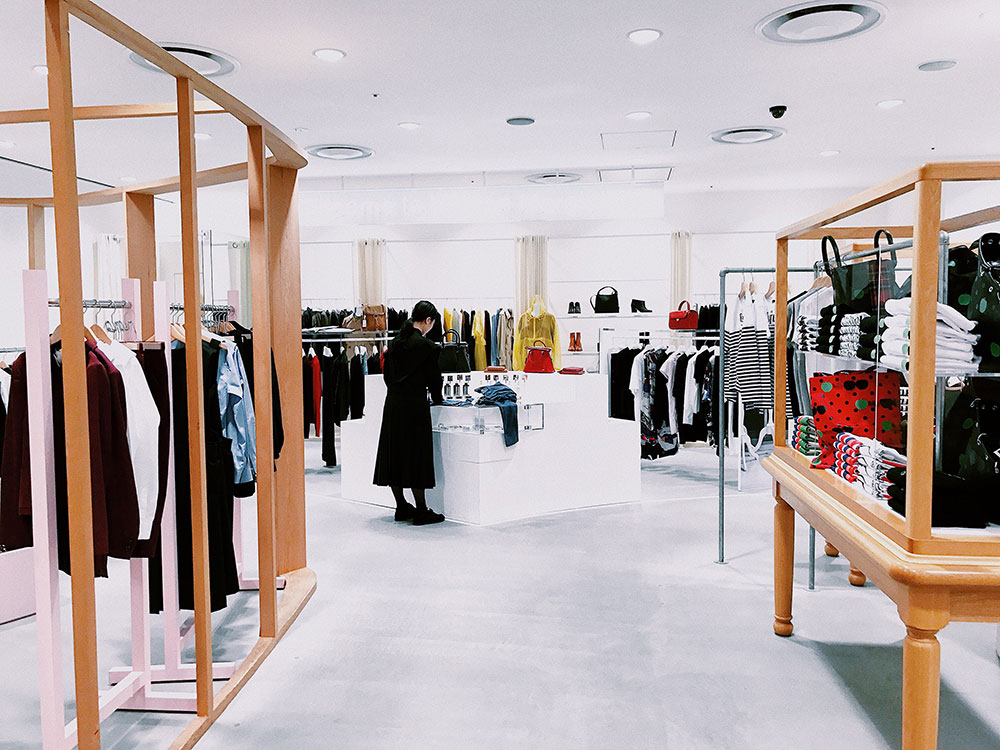If there is one industry, that thrives upon redefining the word “trends” in every season, it is the fashion industry. From clothes to jewelry and a whole range of accessories, the fashion industry is worth trillions of dollars worldwide. In the early days, it was only the rich and affluent that really cared about making a fashion statement, but moving forward to the present, the industry caters to nearly every person on the planet from a crawling toddler to people in their late 90’s. Worldwide, the fashion industry is known for occupying the lion’s share of retail real estate in nearly every format of shopping be it at malls or city centers or exclusive streets, etc. It is a sector where a majority of consumers like to see and feel the product before making a purchase.
As the market evolves, new trends of sustainability, responsible consumption, and ethical sourcing are impacting the very core of the fashion industry. The average consumer today is also taking note of how well their favorite brands are creating value for the world. In a recent McKinsey survey on fashion industry consumer preferences, nearly 88% of the survey respondents believe that there should be more attention from brands in reducing pollution. Nearly 60% of respondents were in favor of using recycled products and opting for environment-friendly packaging.
As is the case in many sectors the fashion industry is not immune to the growing buzz of digital transformation. The industry has long been engaged in using technology to deliver better experiences to customers inside stores and to bolster their supply chain efficiency. With eCommerce, however, the fashion sector witnessed a massive shift in many areas.
The sales approach changed dramatically as the convenience of online shopping, especially during the pandemic, became a more attractive option for people buying fashion products. Today fashion is the biggest segment of B2C eCommerce retail worldwide and is projected to be worth at least USD 1.16 trillion by the end of 2025 according to some studies. In addition to eCommerce, physical stores have also gone high-tech with a slew of innovative technology options being implemented to deliver differentiated and elevated experiences for shoppers.
Be it eCommerce or physical stores, technology is becoming a competitive advantage rather than just being an enabler, for retailers and fashion brands alike. To ensure consistent success, brands are increasingly relying on technology solutions to bolster trust and confidence amongst consumers for their offerings.
Under such challenging market conditions and circumstances, the best way for brands in the fashion industry to sustain profitably is to embrace powerful technologies like analytics to stay cognizant of customer sentiments as well as beat the competition.
Let us look at how the fashion brands can compete strongly with data analytics:
Predict Trends
With big data analytics, brands can uncover patterns of change in customer behavior and predict exactly what interests their most profitable target customer demographics. Be it themes for dresses or choice of accessories or preferences in the choice of sustainable materials, colors, etc. there are massive volumes of data available across digital channels like social media which fashion brands can tap into. Using analytics, this data can be transformed into insights that point at the right trends that a brand needs to focus on for a particular timeline or season.
Enable Better Inventory Management
One of the best ways to practice sustainable business concepts in the fashion industry is to reduce wastage. From eliminating wastage in resources to controlling the consumption of resources like trees, clean water, etc. there are a lot of areas that can be optimized if the fashion industry is able to optimally manage inventory. By leveraging data analytics, it becomes easier to predict required stock positions across products, styles, and variants. The fashion labels can place orders accordingly for goods and ensure they make or buy only what will be consumed. Also, with inventory management optimization, it becomes easier to plan logistics resulting in less travel for trucks or vehicles moving goods between factories and stores or distributors.
Drive personalized experiences
By merely identifying the trends that can take the market by storm, fashion brands have already solved one-half of the customer experience challenge. The other half is driven mainly by offering a personalized experience for customers when they interact with the brand across different channels like stores, eCommerce websites, etc. Using historical data about customer interactions, it becomes easier for brands to offer personalized recommendations like accessories in a particular budget, or color preference or material that a customer is more likely to buy based on their past interests. Studies have shown that 80% of shoppers are likely to make a purchase if a brand or store offers them personalized experiences. With analytics, it becomes easier to offer this personalization.
Improved Targeting for Marketing programs
We have seen how personalization helps in improving customer experiences at the point of sale. Analytics also helps in creating a similar effect in customer acquisition. By uncovering the interests of customers from historic data as well as their preferences modeled through social media and other online interactions, fashion brands can better target prospective customers with marketing campaigns having higher ROI potential. Data can drive impactful and efficient digital ad strategies that ensure relevance, timeliness, and resonance. For example, they can decide on which time to send an email to a customer informing about new products, or the right recommendations to include in an email campaign, etc.
Analytics has the potential to create a long-lasting impact on how the fashion industry moves ahead. From helping them navigate market trends to ensuring compliance to customer sentiments on sustainability and fair consumption principles, making data-driven decisions can help bring greater competitive advantage. The challenge now is to figure out the best path to integrate analytics into a fashion brand’s technology ecosystem. We will cover tips to mitigate this challenge in our next blog. Stay tuned!
